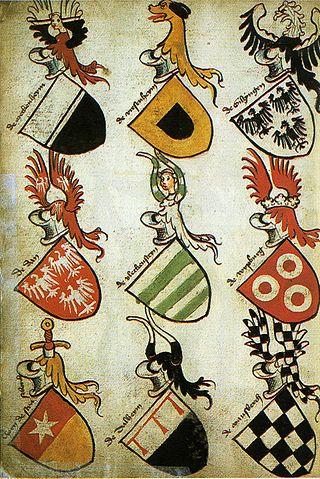
Heraldry is a discipline relating to the design, display and study of armorial bearings, as well as related disciplines, such as vexillology, together with the study of ceremony, rank and pedigree. Armory, the best-known branch of heraldry, concerns the design and transmission of the heraldic achievement. The achievement, or armorial bearings usually includes a coat of arms on a shield, helmet and crest, together with any accompanying devices, such as supporters, badges, heraldic banners and mottoes.
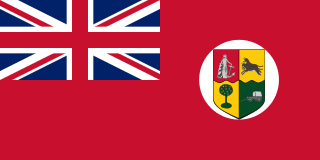
The Union of South Africa was the historical predecessor to the present-day Republic of South Africa. It came into existence on 31 May 1910 with the unification of the Cape, Natal, Transvaal, and Orange River colonies. It included the territories that were formerly a part of the South African Republic and the Orange Free State.

Edward VII was King of the United Kingdom of Great Britain and Ireland and Emperor of India, from 22 January 1901 until his death in 1910.

A crest is a component of a heraldic display, consisting of the device borne on top of the helm. Originating in the decorative sculptures worn by knights in tournaments and, to a lesser extent, battles, crests became solely pictorial after the 16th century.

Seize quartiers is a French phrase which literally means a person's "sixteen quarters", the coats of arms of their sixteen great-great-grandparents quarters of nobility, which are typically accompanied by a five generation genealogy ahnentafel outlining the relationship between them and their descendant. They were used as a proof of nobility in part of Continental Europe beginning in the seventeenth century and achieving their highest prominence in the eighteenth. In other parts, like in France, antiquity of the male line was preferred. Possession of seize-quartiers guaranteed admission to any court in Europe, and bestowed many advantages. For example, Frederick the Great was known to make a study of the seize quartiers of his courtiers. They were less common in the British Isles, seventeenth-century Scottish examples being the most prevalent.

Holcolaetis is a genus of the spider family Salticidae.

Dioctria atricapilla, the violet black-legged robber fly, is a species of robber fly in the subfamily Dasypogoninae. This 9- to 12-millimeter long insect has a wingspan of roughly 7 to 9 mm and short, three-segmented antennae. It's a predatory insect, feeding mainly on smaller flies and predatory hymenopterans. It primarily thrives in grassland, and is seen from May to July.

Empis is a genus of dance fly, in the fly family Empididae. It contains the following subgenera and species:
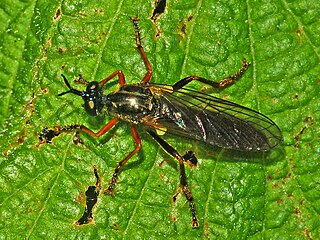
Dioctria is a genus of robber fly classified in the subfamily Dasypogoninae in the family Asilidae. Together with the genus Bohartia, Dicolonus, Echthodopa, Eudioctria and Metadioctria it forms the tribe Dioctriini.
Transtillaspis cothurnata is a species of moth of the family Tortricidae. It is found in Napo Province, Ecuador.
Choreutis cothurnata is a moth in the family Choreutidae. It was described by Edward Meyrick in 1912. It is found in Assam, India.
Dioctria pusio is a species of robber flies in the family Asilidae.
Dioctria pleuralis is a species of robber flies in the family Asilidae.
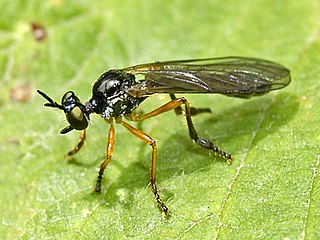
Dioctria bicincta is a species of robber fly classified in the subfamily Dasypogoninae of the family Asilidae.

Dioctria rufipes, the common red-legged robberfly, is a species of robber fly in the subfamily Dasypogoninae of the family Asilidae.
Empis cothurnata is a species of fly in the family Empididae. It is included in the subgenus Polyblepharis. It is found in the Palearctic.
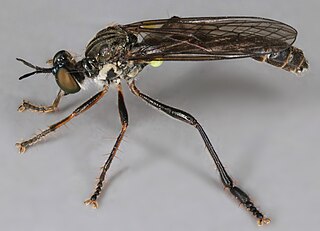
Dioctria hyalipennis is a Holarctic species of robber fly in the family Asilidae.

Dioctria oelandica is a Palearctic species of robber fly in the family Asilidae.












